Mighty Kombat sent in a question a while back that might’ve confused many a player over the years, whether they realized it or not. Let’s take a look!
I’ve got something on my mind and i just need confirmation.
Its about Street Fighter. You know Ultra Street Fighter IV introduced the “Ultra Combo Double” option, which lets you use both Ultra moves at once. Its marked with the W icon, as opposed to the other options using roman numerals for 1 and 2.
I also know there’s an old SF3 compilation game called “Street Fighter III: W Impact” in Japan.
Is it because when spoken by a Japanese person, the letter W (double you) sounds like the word “Double”? Is it basically a pun?
I first encountered these unusual Ws way back in the 90s, but at the time I never paid much thought to them.
For example, in the Super Famicom version of Final Fantasy IV, there’s a technique called “W Meteo”. This was translated as “W.Meteo” in the English Super NES release… but back in the day I just always assumed it stood for “White Meteo”.
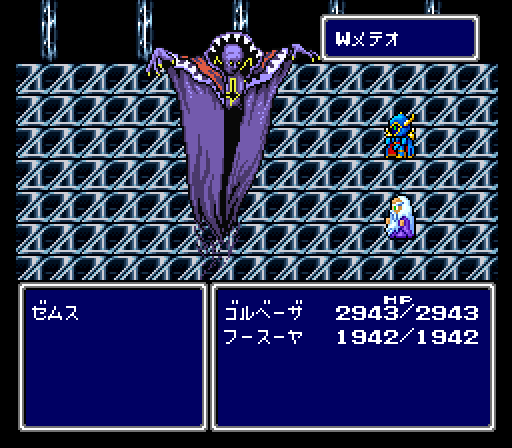 | 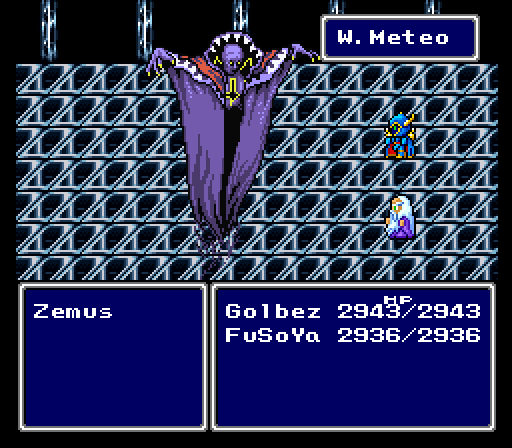 |
| Final Fantasy IV (Super Famicom) | Final Fantasy II (Super NES) |
A few years later I encountered something similar in Final Fantasy VII – a special skill called “W-Item” that lets you use two items in one turn:
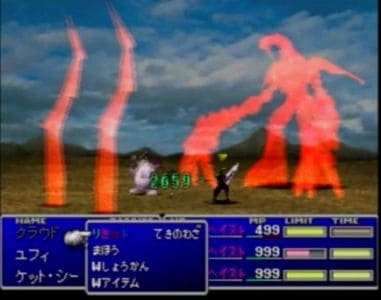 | 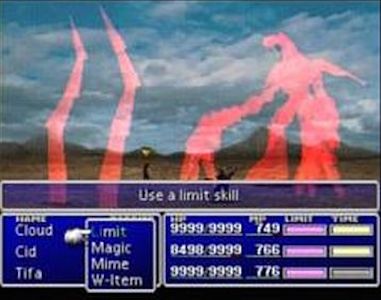 |
| Final Fantasy VII (Japanese, Playstation) | Final Fantasy VII (English, Playstation) |
I’ll admit that with this FFVII “W” I was a little more confused, but I just figured it probably had a good reason for being called that.
And it does, I later learned after studying Japanese for a while! Just as Mighty Kombat surmises, the prononuciation for “W” is often abbreviated down to just the “double” part in Japanese, and as a side effect it often gets used to refer to things that are doubled. So the “W.Meteo” wasn’t a white-spell Meteo like I first thought (although that would’ve been cool); it instead just meant it was a “double Meteo” spell. And “W-Item” meaning “double item” makes perfect sense.
Naturally, this “W” gets used in many places besides games too. It’s very common to see on ads, especially lottery-type things:
 |
 |
And who wouldn’t enjoy some W burgers?
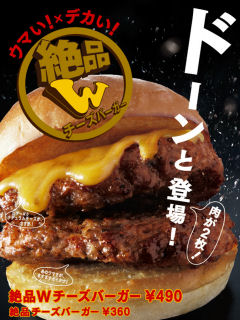 |
 |
And maybe wash it down with some W beer!
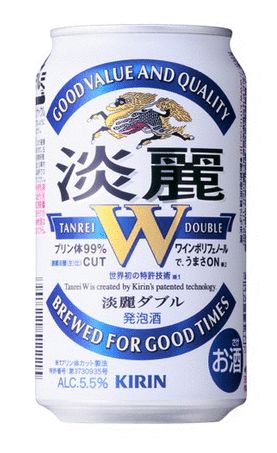 |
This “double” W shows up in many places, but don’t let it fool you! You’ll often see Japanese Internet users saying “w”, but this particular “w” comes from the Japanese word for “laugh” and has nothing to do with “double” at all.
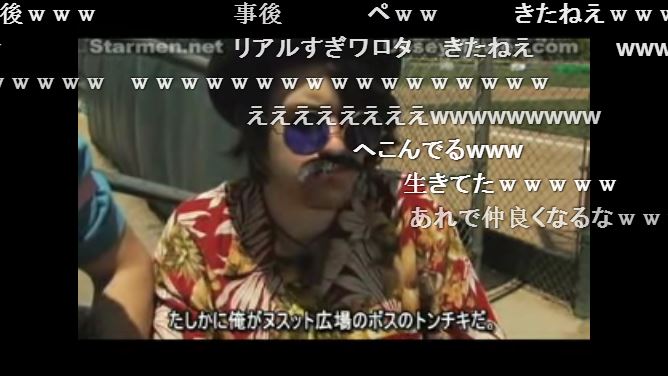 |
Man, they’re really putting the English alphabet to use over there in interesting new ways, now that I think about it.
Anyway, that’s the deal with “W” in a lot of Japanese games. In the old days, the situation was usually one of these two:
- A non-native English speaker, tasked with translating a game into English, might simply assume we also use “W” as “double” in English
- A non-native Japanese speaker, tasked with translating a game into English, might not know that “W” can mean “double” in Japanese
Both cases would result in “W” remaining as-is in the English translations, much to the confusion of many. Modern translators and localizers usually know about this W stuff, though, so I assume it appears a lot less often in translations these days.
I’m actually curious to know what other old games might’ve had “W” stuff like this, so if you know of any, let me know in the comments!


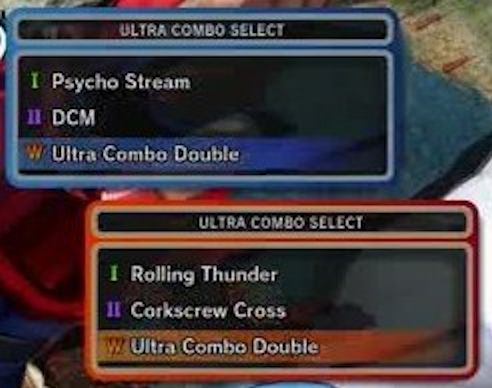

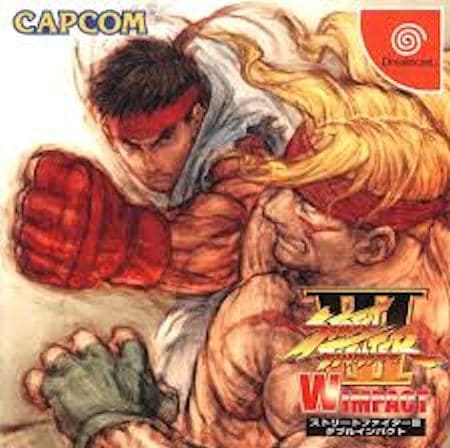
![press start to translate [Final Fantasy IV] press start to translate [Final Fantasy IV]](https://legendsoflocalization.com/wp-content/uploads/2018/05/pressstart.jpg)
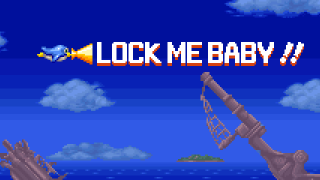
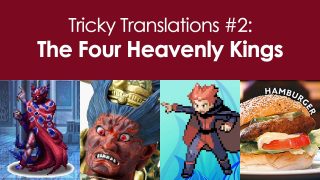
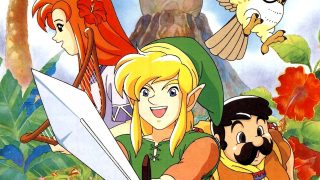
In Ultra Street Fighter IV’s case, the ‘W’ works as an extra pun as well. “Double ‘U'” as in “Double ‘Ultra'”. 🙂
I feel like that makes its use a bit more appropriate for a Western Audience as well.
FF7 had it on W-Summon as well. I had no idea that W.Meteo was actually Double Meteo. Maybe a better modern translation might be 2x? (Like 2xItem, 2xSummon, etc.)
A better way to explain www to non-Japanese speakers might be to compare it to lol, with longer strings like wwwww being similar to lolol.
In fact, that seems to strike a memory, maybe some later remakes of games used 2x? (Though Googling ‘2xItem’ implies that other language translations of FF7 used 2x instead of W-.)
In the After Years, it was called Double Meteo.
Other Final Fantasy games use X- instead. Actually, I thought VII was the only one to use W- and never realized it might be right. I guess, I never knew FFIV used it though. Unless does the X- mean something else?
For AKB48 and its sister groups, W-Centers or double centers happen for performing members of a song.
aww I was hoping you’d explain why they used wwwww for laughing
The Japanese word for ‘laugh’ is わらい(warai). That’s why.
Or, laugh as a verb “warau” …
Time to laugh!
wwwwwwwwwwwwwwwwwwwwwwwwwwwwwwwwwwwwwwwwwwwwwwwwwwwwwwwwwwwwwwwwwwwwwwwwwwwwwwwwwwwwwwwwwwwwwwwwwwwwwwwwwwwwwwwwwwwwwwwwwwwwwwwwwwwwwwwwwwwww
oh also, there’s kamen rider W which has double transformation power
I’m a little disappointed by the lack of mention of Kamen Rider W in the article (It’s how I learned about this) I never did realize W Meteo or W-Item. Interesting article as usual.
I actually had a picture prepped for this article:
But because the significance of this W wasn’t immediately obvious I opted not to use it. Plus sentai and all that stuff ALWAYS seems to be so full of info and gotchas that I feared that whatever I said about it would turn out to be exactly the opposite 😛
“I feared that whatever I said about it would turn out to be exactly the opposite”
IDK if you’ve seen it, but it’s actually totally relevant. W is the only Kamen Rider that requires two people to transform into.
Gundam also had some wordplay for wordplay’s sake involving the W. The most well-known incarnation, Gundam W, uses the W as shorthand for “Wing” because the main Gundam’s name is “Wing Zero”. Several years later, a completely unrelated Gundam series decided to call itself “Double Zero”.
There’s no real relation between 00 and Wing Zero beyond both being shorthanded to “W Zero”, though.
There are so many Japanese usages of English letters I don’t understand, like why is “LL” their equivalent of “XL”?
This is pretty simple, the size larger than “L” in Japan is marked “LL” instead of “XL”. I suppose it’s read “double large” or something like that. Apparently “XS” is marked similarly, as “SS”, though I don’t think I’ve ever actually seen that on a label haha
I’ve seen the SS size on a shirt label from the Hobonichi store. The SS shirt looked like it would only fit a toddler. So yup, you’re right!
To paraphrase someone else…
It’s bigger than big, larger than large!
(And boy, I hope everyone gets the reference.)
Quicker than quick! Stronger than strong!
Huh. I never would’ve thought of that. Then again, I think that most people who speak languages based on the Latin alphabet would think of abbreviating the name of a letter. XD
I actually have a very recent use of W for “double”! In the Hatsune Miku: Project Diva series, starting from “2nd”, has “W” notes which are marked by a W on a colored arrow button (you can see an example on the rhythm game explanation page for 2nd: http://miku.sega.jp/pjd2/game.html). I think this was actually my first encounter with this usage of W in Japanese, so it was pretty easy to figure out what it meant given the context.
These were also left alone when the series finally got an English release with Project Diva F on the PS3! I don’t know how/if they explained it in the tutorial mode or anything though, since I skipped over that due to already knowing how to play haha
Hi there! Friendly neighborhood (Un)BalNz’D here!
Long story short, I’m also a big fan of the Project Diva games and noticed this too.
In the tutorial for the eng. release of f/F, W-notes and how they’re played are brought up in the in-game tutorial, but are only referred to as “arrow-shaped icons”.
Though this isn’t related to games, I believe the first time I saw it was in the Sailor Moon manga, where the attack “Rainbow Double-Moon Heartache” was shortened with the W having “daburu” furigana in katakana above it.
So “W” is pronouced “daburu” for short typically? Yeah, it makes sense. It’s still coming back to the “doubled U” meaning. It’s interesting how words that aren’t used too often in English can become Japanese standards like this.
Hmm, if a W can also imply laughter, is that part of the logic as to why one of Wario’s victory animations in Smash Bros is bursting into a fit of hysterical laughter?
…It does kind of suit his personality regardless though.
My gut feeling says that that’s probably just a coincidence – “w” rarely means “laughter” outside of the Internet.
“Wario=warai” still works.
I’m pretty sure Wario is 「悪い」 (warui) [“bad”] + Mario.
The update Tomato promised! 🙂
Can we nickname Vivi in FF9 “Double” now? wwwwww
And I thought of another use for “w”.
C++ has a type “wchar”. I think it is meant to be “wide” char, but it could it be “double” as well (as it used to hold 16-bit chars for Asian languages), or double the standard 8-bit needed for European languages)
In Kirby Super Star, In the English version of Revenge of Meta Knight, Meta Knight is called a villain with lines such as “”I’ll conquer Dream Land with the Halberd!””. In the Japanese version, he has a excuse, he wants to end Dream Land’s lazy lifestyle. Plus, it’s your first Kirby comparison.
“Dreamland’s lazy lifestyle will end” is in the English version too. At least in the SNES version.
I’ve noticed the whole “www” = “lol” thing, so I like to type random w’s sometimes just to be silly. xD It works best in Minecraft, where when you enter a bed to sleep, it opens the chat console, and since the W key is the button for walking forward, I commonly end up with W’s in the chat console. So I usually just hit enter, then everyone on the server has no idea what I’m trying to type. Haha. Just kidding, they ignore me… (Or maybe they know what I’m trying to say, I don’t know, I need to take a nap)
Looking back, I never really questioned why the materia in FFVII were called “W-Item” and “W-Summon” to denote a double usage. Then again, that was my 6-year-old brain that just accepted everything as normal and went about my business. Interesting and informative article!
It’s difficult to tell at this great of a remove, but I’m pretty sure I recognized the “double” meaning of W.Meteo from the first time I saw it, just based on the fact that there were two people casting the spell – and I definitely understood what was meant with W-Item and W-Summon in FF7.
Maybe I’m atypical (I do have a much greater understanding of Japanese than most people who don’t actually speak the language, although I didn’t start acquiring that until well after playing FF7), but I wonder how many other people caught the meaning without difficulty as well…
I feel like I’ve seen X used for this sort of thing sometimes instead of W…
Oh hey! Also I was on the Final Fantasy Wikia recently and they said this…
“In the fan-translation of Mother 3, a pig sings a “musical fanfare”. The text box implies that this is the Victory Fanfare. It is unknown whether this was in the original Japanese version. ”
Was this in the original Japanese or was this a liberty taken during the localization?
(here’s the page it’s on if that matters: http://finalfantasy.wikia.com/wiki/Final_Fantasy_in_Popular_Culture )
That’s most definitely overreaching by someone that wants to see signs of their favorite thing in everything; like someone that links all instances of “chrono” with “Chrono Trigger” or wonders if anything with the title “Record of *thing* War” is a reference to “Record of Lodoss War”. The text box doesn’t imply that it’s the Victory Fanfare at all.
According to Clyde on his test-run stream of the 1.2 patch, he did in fact translate it as the Final Fantasy fanfare. The little “oinka-oink” at the end makes it pretty clear that it’s the FF fanfare. So, no, the FF Wiki isn’t overreaching at all.
In the original the line is:
“ぶっぶぶぶー ぶぶぶ ぶっぶぶぶー。(ファンファーレの ものまねです)”
“Bubbububuu bububu bubbububuu. (It’s an imitation of a fanfare.)”
…which clearly isn’t the FF fanfare.
Super Robot Wars W, named as such because it was the first SRW in the DS. That has two screens.
Or the game (and tie-in anime) Danball Senki W from Level-5. Which happens to be the sequel to the first game (which has a regular and another updated version, and a tie-in anime).
I remember always thinking it was short for “wide.” Like it’s a special, wider Meteo. Which I’ll grant makes no sense, but come on.
Now do one explaining the apparently magical properties of the letter Z. 😉
Like Danboru Senki “W”!
Exactly! You a Danball Senki fan by any chance?
X is cross and W is double to them. I’ve always found that unusual yet interesting.
“X” is/was “cross” to English speaker too. Just look at old railroad X-ing signs.
Uh, not really. Unless you’re thinking of signs specifically, people associate “X” with being said “ex”.
WIXOSS (A card game, that had an anime based on it) being pronounced “WIKROSS” still feels wierd to me
And oddly enough we also associate x with z.
There’s also “Digimon Xros Wars”, where “Xros” is pronounced “cross”.
“Xros” should really be pronounced “double cross” :p
Imagine my surprise as a child playing a Harry Potter game on the PlayStation when Nearly-Headless Nick called the “ex button” the “cross button.”
If you’re talking about ✕, it’s not quite an X.
When I was young I used to assume it actually was that W worked for ω without actually writting a lowercase omega character.
So W.Meteo was Omega Meteo. On that same logic Zero (“O”) prefixes were actually uppercase Omega. (Therefore often the strongest)
Although later most of the ones I encountered actually had in-context meanings.
The W thing pops up a lot, to be certain. FF7 has tons of it with W-Item, W-Summon, W-Magic, and Barret’s W Machine Gun. I know I’ve seen it in other places too, but I can’t remember where exactly at the moment…
Off the back of my hand, I remember Final Fantasy Legend II for the GameBoy left things like W-Punch and W-Kick intact in its localization.
… yet they still remembered to censor out the opium for bananas…
In a more recent(ish) non-gaming example, I believe Ryuusei no RockMan’s anime also features a “W Luna” and she’s referred to as such in-writing on an episode card.
Ever since learning what W meant, I’ve kinda just glossed stuff like that over… I might just have to replay some gems to see if I can catch it in action!
Also, it’s awesome seeing someone else into Goemon. Those were some awesome games. Shame the rest were never localized, they did quite the job on games 5 and 6!
Goemon 5 and 6? What are you even talking about?
The only numbered entries (and it was by fans) were the sequel to the original NES platformer that started it all (technically it was an Arcade port but, well..), the sequel to the NES spin-off RPG, and some of the four main Super Famicom entries (Ganbare Goemon 2, Ganbare Goemon 3, and the sequel that’s missing the numbering yet counted as the fourth in the canonical SFC games, the Ebisumaru puzzle game aside)
After the Super Famicom games, first thing Konami tried was getting them on the PS1. They created a 3D platformer that’s one of the worst in the whole genre. Public vocal reception wasn’t kind, at all. They made afterwards an uninspired 2D ripoff of Ganbare Goemon 2 SFC, and another similar game but this time with pre-rendered 3D sprites that are still 2D. And another one with a futuristic theme as a gritty reboot (and it got a horrendous GBA port) that wasn’t received very well at all (they had the neo-Goemon punk thrown into jail in the DS game as a criminal and impostor, I think 😛 ).
Basically, they shurned shit that was supposed to be Goemon 5 and 6 and continuation of the popular SNES line (Goemon 5 was even the in-development internal name for the 2D one with Space Pirates in the title). Nintendo 64, and the rest of the world (excluding the uldcept clone, that is), got the more polished games made after the horrendous PS1 games. They’re the better games but they’re absolutely not a direct continuation of the SNES line. Which is a shame, since after all those failures in judgement they only managed two games (a Zelda OoT clone for PS2 that’s decent, and a DS game that was what the first 3D PS1/N64 games should have been)
It feels like a long time since the last update, so I have a question about Ace Attorney Investigations II: Prosecutor’s Path (逆転検事2):
In Chapter 2, Ray Shields (信楽盾之) asks Kay Faraday for a hug but is refused, and in response, he says “I guess not. He he he. This isn’t Europe after all.”, pointing out that hugs between strangers are more common in Europe than in the United States of America.
However, knowing that the series, in its original language, takes place in Japan and that references to Europe are instead references to the United States of America, I used save file trickery to reach the same place in the original Japanese version, and though my knowledge of the language is not good, I deduced that 信楽盾之 says this instead:
「だよねー。へへへ。アメリカじゃないもんああ、ココ。」
I can clearly make out “America” in the above sentence, so I think that 信楽盾之 is assuming that hugs between complete strangers are common and/or culturally accepted in the United States of America. While I haven’t been to many states other than the one I live in, I highly doubt this is the case. Knowing what I know about American culture, this thought process is inaccurate… and possibly offensive depending on the reader. With so many cases of sexual abuse in the news, bodily contact between strangers (anything more than a handshake) is seen as fear-inducing by Americans, so our personal space bubbles are wider than in some European countries.
So I would like clarification on whether 信楽盾之’s Japanese line has any semantic differences from Ray Shields’s English line. Is it a stereotype that the Japanese have about America? Did 信楽盾之 visit a part of the United States that is unusually liberal about hugging between strangers? Is what little hugging in America still more frequent than Japanese hugging, however slightly that may be? Or did Capcom’s scriptwriters neglect their research?
Old comment, I know, but hugging is viewed as a much more intimate gesture in Japan, so it’d be weird for two people who aren’t in a relationship to do it.
Wow, thanks for turning my email into one big article!
I figured it was something along the lines of a pun or similar, yeah. Thanks for the clarification, and its funny seeing the Japanese make so much use of English words and in this case, even letters.
I didn’t know W was also used as their version of “LOL” as well though. These guys are amazing.
I also had another query related to the Tales series as well, if you’re interested?
Huh… Are you sure that the long stream of w’s that the Japanese attach to words on Internet streams is a reference to “wara” (like in Osaka-ben)? I was always under the impression that the use of w’s like that was just their shorthand way of extending the word. For example, I noticed in lots of manga characters will express disbelief by say “hehhhhhh?”, except they’ll just use the first “heh” hiragana and extend it with a long squiggly line, like “heh~~~~~?” Consequently, I always thought that the w’s on the Internet were just a shorthand for that wavy extension, so it would be “hehWWWWW”. Kind of like how the Steam game “VVVVV” is a reference to how the character jumps up and down to stand on either the ceiling or ground like in a wave motion.
They’re more of an equivalent to someone taking ‘lol’ and then extending it as ‘lolololol’. lol is probably the closest short hand to the Japanese ‘w’ in any case.
That’s what it says in the article, but all the Japanese friends from Osaka I had who’ve used the Japanese version of “lol” simply use the kanji character (笑) “wara” at the end of their sentences, not the letter “w”. When I see “w” being used by Japanese on the Internet, it’s usually after a word that could be extended for emphasis, and visually that’s kinda what it looks like. Really makes me wonder!
No, it’s definitely not a vowel lengthener and it does mean lol. Source is a bunch of different sources that make it obvious that they’re laughing at the time.
The Hatsune Miku games have them too. They’re on the colored arrows.
I’ve learned this through a proper translation. Played both the English and Japanese version of Rhythm Heaven Fever, where one of the games is called W-Date in Japanese and Double Date in English.
There’s an anime called W Wish, which is pronounced as Double Wish.
Cursed Wappos, always ruining the English alphabet with their illogical pronunciations and interpretations.
Hmm. I’ll definitely be on the lookout from now on.
Though now that I think of it, I think I’ve seen the “laughter” usage in Lucky Star, during one of the few times we actually see Konata’s computer screen.
I thought it meant “White Meteo” too, but that made me even more confused. Why? Meteo does holy elemental damage. It’s already White Meteo.
This is an old article, but since it says white-spell Meteo would’ve been cool, I thought it might be fun to mention. Your wish was granted long ago!
Oh, it does? I thought it was non-elemental damage.
I definitely thought those were supposed to be “Omega”…
I learned about this in a most roundabout way!
So, in Super Robot Taisen for the GBA, the English script has Excellen Browning tease the enemy when she uses her Oxtan Rifle W shot. Effectively, it’s called the “Double Mode” (and one of her attack lines references her setting the rifle to “D” mode), but it’s still referred to as “W” in the menu. This leads to a puzzling pun where she says, “Pop quiz? What does the ‘W’ stand for? [forgot the two answers she made first]? My cup size?”
I eventually arrived at the conclusion that the W probably stood for “double”, and she was making a “double-D” joke that just got messed in the translation. I mean, Excellen was the same character that messed up a “they’re”/”their” in one line. “Their more Rambo than Romeo!”
As a boombox collector, this is a common designation in units with two cassette decks, Sharp even had a W series.
In Sonic the Hedgehog 3 and Sonic and Knuckles, Sonic the Hedgehog has an ability known as the “Insta-Shield” in english. this technique is sued when Sonic has no shield and he hits the jump-button mid-air. It causes him to have a little shockwave that quickly rotates around him in the same way as his spinning jump. This has the effect of extending Sonic’s hitbox for a moment, mostly. calling this a ‘shield’ is charitable at best. I think the Japanese name for this attack is more apt, as in Japanese, this is known as the “W-Spin Attack”
I just found one. I’ve downloaded this game called Conception 2: Children of the Seven Stars. In it, the main character transfers to an academy that is a line of defense between a nearby town and Dusk Circles: a labyrinthine nest from which monsters are spawned. Until the protagonist’s arrival, people have been unable to fight monsters within the Dusk Circles themselves, meaning the only thing Disciples could do is fight them outside, but never stop the flow. But now, he can take a girl and 3, 6, or 9 Star Children inside and seal the Dusk Spawner at the lowest level.
Star Children are made through a holy ritual called “Classmating”, which takes place between the main character and a selected girl at the Church at the cost of some Bond Points. (Despite how it sounds, and the imagery when it’s happening, both the main character and the girl are fully clothed immediately before and after, with not enough time to assume that changes between… though that leaves some questions… also, the Star Children are born from a Matryoshka, not from the girl.) There are two variants, and a mixture of the two variants. One variant is Tri-mating, where the protagonist Classmates with two girls at once. This produces stronger Star Children at the expense of costing more Bond Points. Another variant is where the protagonist Classmates with another boy, which is called Classmanting. (It’s still really experimental in the part of the game where I am, and I only do it when the game makes me. It didn’t work at all the only time I’ve seen it.) The combination of variants is called… da, da-da-daaa… W Classmanting, probably because he’s performing the ritual with two other boys instead of just one. (This time appeared to be successful, but then it wasn’t. I’m looking forward to a success, if only so they’ll stop making me. Trust me, the characters involved don’t seem to be enjoying it, either.)